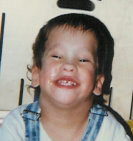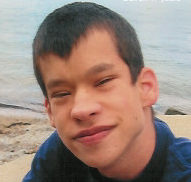
Jun 14, 2021
After the participant was born, he stayed in the hospital for a month because of breathing problems and no suck. He was very floppy and his development was delayed; he sat at the age of 3 and walked at the age of 8. He currently does not speak, but uses a few signs and follows directions. He is able to walk with his knees bent.
Some of his other symptoms include seizures, brain abnormalities (abnormality and agenesis of corpus callosum, polymicrogyria), enlarged aorta (aortic dilatation), curved spine (scoliosis), and hearing impairment. He also has cataracts and nearsightedness (myopia). Recently he was diagnosed with GDF11-associated multiple congenital anomalies and intellectual disability.


Clinicians and researchers have identified the following genetic change to be causing the participant’s symptoms:
If this participant sounds like you or someone you know, please contact us!